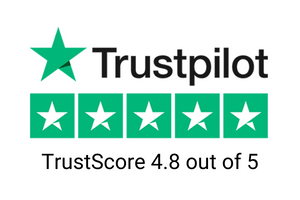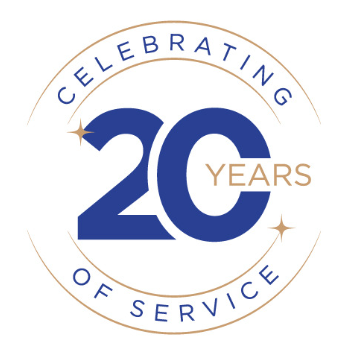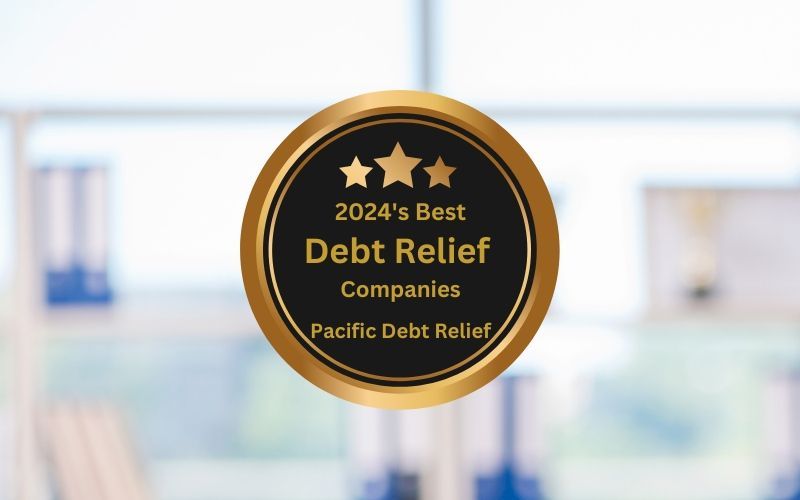Last Updated: August 1, 2024
Navigating Your Debt Relief Options
Disclaimer: We are not qualified legal or tax professionals and are not giving advice. Always speak with a qualified professional before making any legal or financial decisions.
Struggling with debt affects both your finances and peace of mind. Whether it's credit cards, medical bills, or student loans, you're not alone in seeking financial freedom.
Fortunately, various strategies exist to ease your financial strain. This guide explores the best debt relief options available, from management programs to bankruptcy. By understanding these choices, you can make an informed decision about which path suits your situation best.
With the right approach, a debt-free life is within reach. Let's explore your options and take that first step towards regaining control of your finances.
Want to skip the article and speak directly to a debt specialist? Click here for a free consultation.
Debt Management Programs
Debt management plans, one of the best debt relief options, offer a structured approach to repaying unsecured debts. Credit counseling agencies negotiate lower interest rates and fees with creditors. You make one monthly payment, which the agency distributes. These 3-5-year programs are ideal for those with $5,000-$10,000 in debt and steady income, providing an effective path to financial freedom.
How Debt Management Programs Work
- Meet with a credit counselor to review your financial situation
- Counselor contacts creditors and tries to negotiate reduced rates and waived fees
- Make a single monthly payment to the agency
- The agency distributes payment to creditors per negotiated terms
- Accounts enrolled in the program are closed
- Continue making monthly payments until debt-free (typically 3-5 years)
Pros of Debt Management Programs
- Make a single monthly payment instead of many
- Lower interest rates reduce the amount paid over time
- Late fees can be waived, saving money
- End harassing calls from collectors
- Allows disciplined path to repay debts in full
- Does not hurt credit scores like debt settlement or bankruptcy
Cons of Debt Management Programs
- Enrolled accounts will be closed, no new credit available
- Monthly administration fees to the agency (though some offer free counseling)
- Typically must repay debt in full, rather than a settled amount
- Requires 3-5 year commitment to monthly payments
- If you fall behind, collectors may resume pursuit of full balances
Best Suited For
Debt management programs work best for those that have relatively low unsecured debt burdens ($5,000 - $10,000) but steady income to handle monthly payments. Your credit also cannot be too severely damaged, as creditors have to agree to the proposed repayment terms. If you have fallen far behind on payments, debt settlement may be a better option.
Debt Consolidation Loans
Debt consolidation loans, one of the best debt relief options, combine multiple debts into a single, lower-interest loan. This simplifies payments and potentially reduces overall interest.
Borrowers use the loan to pay off existing debts, leaving one manageable payment. While effective, this approach requires discipline to avoid new debt. When used responsibly, consolidation can be an excellent choice among debt relief options.
How Debt Consolidation Loans Work
- Research loan options and compare interest rates
- Apply and get approved for a personal loan with a fixed rate
- Loan proceeds are used to pay off existing credit card/debt balances
- Manage a single loan payment each month going forward
- Term length varies (36-60 mos typical) based on monthly payment goals
- Avoid accumulating new debt during the repayment period
Pros of Debt Consolidation Loans
- Simplifies multiple payments into one monthly bill
- May qualify for a lower fixed interest rate to save money
- Allows spread repayment over the chosen loan term
- Avoids fees and complications of debt management plans
- Can start with a clean slate once existing debts are paid
Cons of Debt Consolidation Loans
- Consolidating debt doesn't make it vanish
- Late fees and interest still apply if payments missed
- Credit score requirements may disqualify borrowers
- Loans are often secured by assets like a home or car
- The temptation to fall back into debt remains
Best Suited For
Debt consolidation loans, one of the best debt relief options, suit borrowers with good credit seeking lower interest rates. Collateral can help, but discipline is key to avoiding new debt. This option is effective for those with decent credit but may be hard to get with a poor payment history.
Balance Transfer Credit Cards
Balance transfer credit cards move high-interest balances to a 0% introductory APR card, reducing fees and boosting principal payments. This approach, considered one of the best debt relief options, can be effective if the balance is paid before the 0% rate expires. Remember that this method defers interest rather than reducing total debt.
How Balance Transfer Credit Cards Work
- Find credit card offers with 0% intro APR periods for balance transfers
- Apply and get approved - a good credit score is usually required
- Transfer over balances from existing higher-rate credit cards
- Pay off balances before the 0% intro rate expires
- The remaining balances accrue interest at the standard rate afterward
Pros of Balance Transfer Credit Cards
- 0% APR period provides interest savings
- Consolidates payments onto a single card
- Allows time to pay down principal before interest kicks in
- Easy online balance transfer process
Cons of Balance Transfer Credit Cards
- Balance transfer fees usually apply (3-5% of the amount)
- Must complete payment before 0% rate expires
- Existing cards remain open and can still be used
- Requires good credit score for approval
- Remaining balances accrue interest at standard rates
Best Suited For
Balance transfer cards work best for those with good credit who can pay off balances during the 0% period. One of the best debt relief options, this strategy offers temporary interest relief but doesn't reduce principal. Beware of snowballing interest on unpaid balances after promotions end.
Debt Settlement
Debt settlement companies can provide an alternative to bankruptcy for consumers facing severe financial hardship and inability to keep accounts current. Professional firms and debt relief companies like Pacific Debt Relief have extensive experience negotiating with creditors for reduced lump sum payoff amounts for clients overwhelmed by unsecured debt burdens.
Reputable debt settlement companies use transparent processes to achieve settlements. This approach, one of the best debt relief options, can be effective when circumstances fit. Success depends on creditor policies and the firm's expertise. Some industry leaders excel at reducing debt through this method.
How Debt Settlement Works
- Stop making payments to creditors (severe risk of credit damage and legal action)
- Enroll accounts in the debt settlement program and pay the monthly amount to an escrow account
- Debt settlement company negotiates with creditors once sufficient funds accumulated
- If settlement offers accepted, escrowed funds are paid as negotiated lump sum settlements
- Any remaining debt is considered forgiven/discharged by creditors after settlement
Pros of Debt Settlement
- Allows borrowers to settle the debt for a fraction of the amount owed
- Avoids the bankruptcy route which inflicts long-term credit damage
- Some relief for those facing truly critical financial scenarios
- Debt forgiven is no longer owed after settlement payment
Cons of Debt Settlement
- This can lead to lawsuits, collections, wage garnishment
- Cound cause damage to credit due to non-payment
- Large fees (15-25% of the enrolled debt) to the settlement company
- Tax implications on “forgiven” debt
Best Suited For
Debt settlement is usually a last resort for severe financial hardship. While among the best debt relief options, it comes with credit damage and legal risks. The process can be lengthy and costly. For those unable to keep accounts current, bankruptcy might be a better choice if debts are truly unmanageable.
Get a FREE Consultation today from Pacific Debt Relief.
Pacific Debt Relief offers a complimentary evaluation of your financial situation to explore customized national debt relief and solutions. Their team has helped thousands reach settlements and achieve freedom from debt.
Bankruptcy
Bankruptcy offers legal protection to eliminate or restructure overwhelming debt. Among the best debt relief options, Chapter 7 and Chapter 13 are primary types for consumers. While this approach, one of the best debt relief options in extreme cases, has severe credit impacts, it can provide a fresh start when finances become dire.
Chapter 7 Bankruptcy
Chapter 7 bankruptcy involves liquidating assets to pay creditors. It's one of the best debt relief options for those with significant unsecured debt. This approach can discharge remaining debts like credit cards and medical bills after liquidation.
To qualify for Chapter 7, applicants must pass a "means test" based on income thresholds in their state. If disposable income exceeds state medians, Chapter 13 reorganization bankruptcy is required instead. The Chapter 7 process typically completes in 3-4 months.
Chapter 13 Bankruptcy
Chapter 13 bankruptcy allows borrowers to reschedule payments under court protection. Among the best debt relief options, it lets individuals keep assets while repaying debts over 3-5 years. With no specific income requirements, it's accessible to many seeking financial stability.
Pros of Bankruptcy
- Stops collections calls and lawsuits in their tracks
- Allows discharge of unsecured debts like credit cards and medical bills
- Court supervision imposes rules and structure on the process
- Monthly payments are structured based on the ability to pay (Chapter 13)
- Chance to rebuild credit after 7-10 years if financial habits change
Cons of Bankruptcy
- Severely damages credit making borrowing difficult and expensive
- Remains on public record for 7-10 years
- Attorney and court filing fees can be costly
- For Chapter 7, the risk of losing non-exempt assets/property
- 3-5 year Chapter 13 repayment plan must be completed
Best Suited For
Bankruptcy offers a legal path for debt elimination when finances are dire. While it's one of the best debt relief options for those unable to meet obligations, it's crucial to weigh the benefits against costs like fees and credit damage. Consider all debt relief options before choosing this significant step. You should consult a bankruptcy attorney if you are considering bankruptcy.
Choosing the Right Debt Relief Option
With the wide variety of debt relief solutions available, it is crucial to choose carefully based on your specific financial situation and goals. While every program aims to reduce the burden, they can take very different paths to resolution. As you evaluate the options, keep these key factors in mind:
- Amount of Debt - When choosing among the best debt relief options, consider your debt amount. For smaller debts, debt management programs offer affordable full repayment. For larger sums, the best debt relief options might include debt settlement or bankruptcy, which can reduce or eliminate balances.
- Available Income - Your income level and stability determine if you can handle monthly payments under a debt management program, or a 3-5 year bankruptcy repayment plan.
- Credit History - Your current credit standing influences what programs you may qualify for. Debt consolidation loans require decent credit scores for example.
- Asset Protection - If protecting valuable property like a home is a priority, Chapter 13 bankruptcy may allow you to catch up on secured debt payments.
- Time frame - Debt settlement programs can resolve accounts much faster than 3-5 year repayment programs. But bankruptcy offers an immediate stay of collections.
- Costs - Attorney, agency, and court fees vary across different forms of debt relief. Make sure you understand all costs.
- Credit Impact - Most options will inflict some credit damage. Bankruptcy hurts the most but also gives a relatively quick path to rebuilding for some.
When considering the best debt relief options, consult accredited credit counselors and attorneys. These experts can guide you through various programs suited to your situation. Remember, viable solutions exist to improve your finances. Seeking help is the first step toward financial peace of mind.
FAQs
Conclusion
As consumer debt rises, many Americans seek help managing overwhelming finances. The best debt relief options vary from debt management and consolidation to settlement and bankruptcy. Each approach offers unique benefits and trade-offs. To find the best debt relief options for your situation, evaluate each program carefully and consult professionals. With the right plan, a debt-free future is achievable.
If you are struggling with overwhelming debt and want to explore your relief options, Pacific Debt Relief offers free consultations to assess your situation. Their experienced debt specialists can provide objective guidance to help find the right debt relief solution.
*Disclaimer: Pacific Debt Relief explicitly states that it is not a credit repair organization, and its program does not aim to improve individuals' credit scores. The information provided here is intended solely for educational purposes, aiding consumers in making informed decisions regarding credit and debt matters. The content does not constitute legal or financial advice. Pacific Debt Relief strongly advises individuals to seek the counsel of qualified professionals before undertaking any legal or financial actions.
Reduce Your Credit Card Debt By Up to Half

BBB Reviews | 4.9/5.0 Rating










 Do Not Sell My Personal Information
Do Not Sell My Personal Information